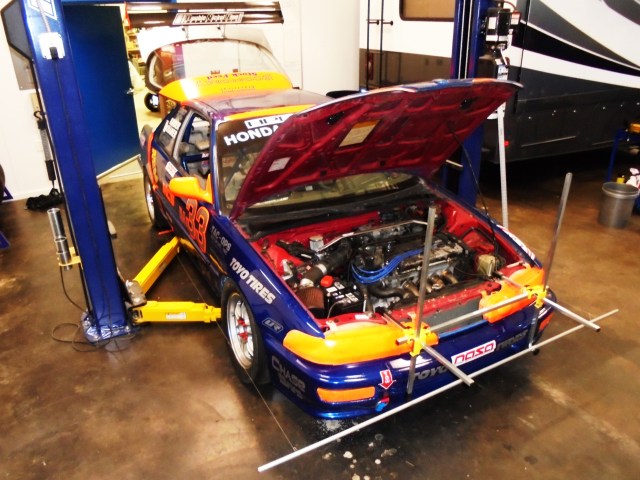
As a racecar driver, I have learned to hate alignment shops. When I have told shop technicians I want 3.5 degrees of negative camber, they often have argued with me that my settings are incorrect per their manual. I explain to them that I’m not trying to get 50,000 miles out of a set of tires. I am trying to win races.
Different alignment machines use different data — degrees versus inches — so when I say I want an eighth-inch of toe-out, the technician has no idea what that means in degrees. Other machines don’t provide data at all. They just have red and green lights to get the car back to manufacturer-recommended alignment specs, which differ greatly from racing specs. So I have decided to fire all of them.
I have replaced them with an alignment system called Craig Watkins’s Smart Strings and Smart Camber. The tools are inexpensive, easy to understand, and can be used in your garage, carport or racetrack paddock. Why should we use the Smart String system? Well, Watkins worked as chief engineer for Johannes van Overbeek and Flying Lizard Motorsports, who raced at places like Le Mans and won the 24 Hours of Daytona. Yes, they used Smart Strings to align their Porsche racecars. I’m convinced.

The basic premise is to use strings to create a perfect box around your car and to take measurements from that box. What’s cool about the Smart String system is that this “box” hangs from your car at the correct height —the center of your car’s axles — and you can push the car around to settle the suspension without messing up the string box for repeatable measurements.

Additionally, a key difference between using the Smart Strings system versus toe plates is thrust angle adjustment. Toe plates only measure toe between two wheels at a time — front or rear — which means the measurements to the true center of the vehicle relative to each other aren’t known. The box created by Smart Strings gives you a plane to measure the front and rear wheels against at the same time, ensuring your car will track correctly. If you are unfamiliar with what the thrust angle is or you think toe is something you have on your foot, visit https://www.smartracingproducts.com/smartstrings and download the owner’s manual for the Smart Strings, which provides an easy-to-understand lesson on vehicle alignment and nomenclature.

The first thing to remember is order of operations: First, set your ride height, adjust your caster, your camber, and then your toe. While making alignment changes, especially for toe, it is important to have your steering wheel straight. This can be done by locking the steering wheel into place with a special tool, or by having children. I make my kids sit in the driver seat for hours holding the wheel straight while sitting on weights to replicate my body mass in the driver’s seat. Yup, father of the year.

To measure camber, hold the Smart Camber gauge against the wheel and read the digital display, which is in degrees. Adjust your camber until you get the number you are looking for. Easy stuff. The digital display makes reading the measurement easier and the tool allows for zeroing on a nonlevel surface, such as any paddock asphalt, at any track, anywhere. This allows you to make accurate adjustments on an imperfect surface. Bubble levels don’t have that feature.

To check caster, all you need to do is measure your camber using the Smart Camber tool with the front wheels straight, then turn the wheels to 20 degrees left and measure your camber again. You can determine the 20 degrees of turning using a template provided with the tool to put lines on the ground. Write down the new camber measurement. Turn the steering wheel back to center and then turn the front wheels 20 degrees right and measure your camber again. Write down that measurement. The change in camber from the three positions indicates the imaginary line the front spindles are pivoting on. Adding/subtracting the different camber measurements from each other will determine positive or negative caster as well as the total amount of caster. If this is confusing, go to https://www.smartracingproducts.com/smartcamber and download the owner’s manual for the Smart Camber gauge to read Craig Watkins explanation of it. Yes, he’s an engineer, but he’s a racer, too, so he makes the stuff easy to understand.

We have played around with both tools inside garages and at the track and found them both super easy to use. We came up with a couple of little tricks, like marking the wheel at 12 o’clock and 6 o’clock with adhesive signature tabs, for repeatable camber/caster measurements. We also use small fishing weights at the end of our strings to keep the strings tight for accurate measurements. The best part about the tools is that I never have to go back to an alignment shop again.









To read more from Rob Krider, or to contact him, go to www.robkrider.com.






















Great stuff Rob, it’s no wonder you guys are so dominant!
Rob – do you use slip plates ? I see some do and some don’t.